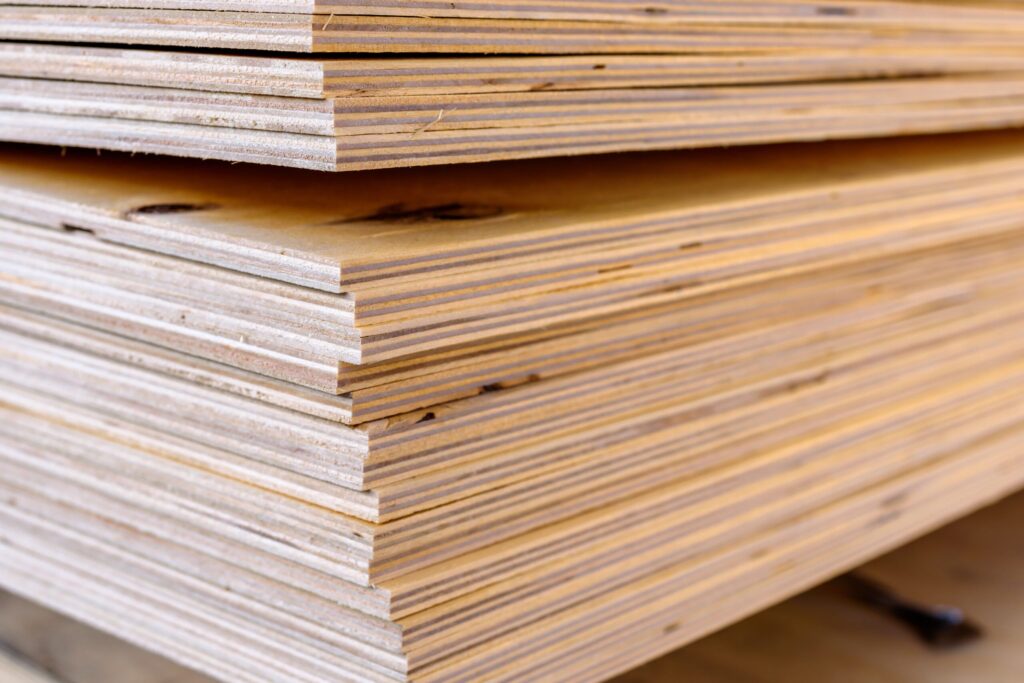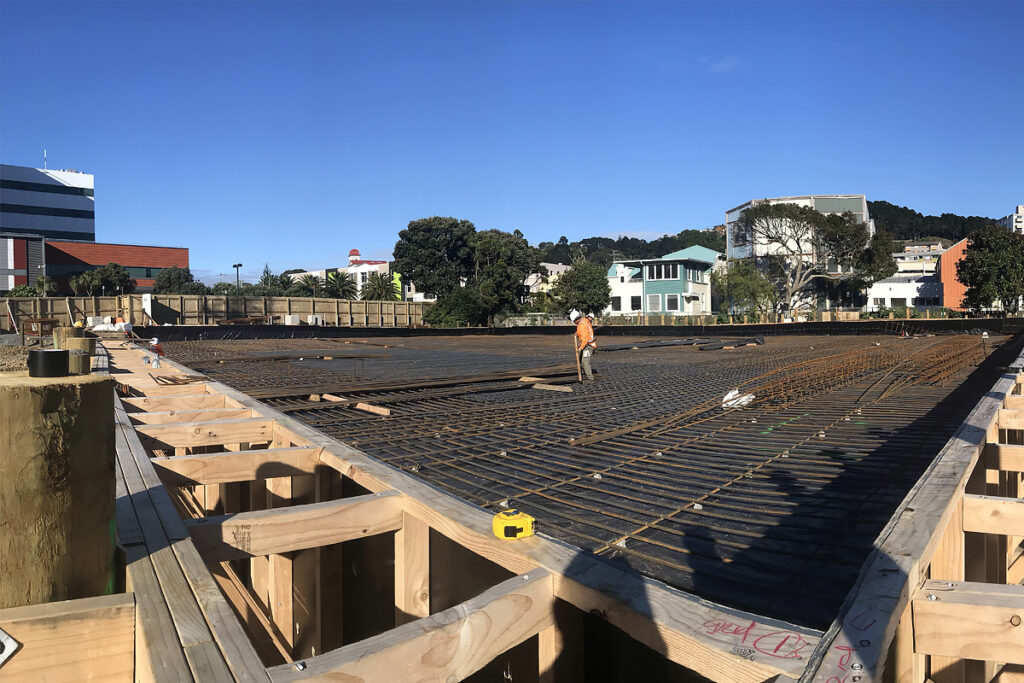Understanding the Basics of F14 Grade Plywood
F14 grade plywood is a type of engineered wood product that combines the strength and stability of natural wood with the benefits of modern manufacturing techniques. It’s specifically designed to withstand the rigors of construction, making it a favored choice for formwork applications. Understanding the specific properties and standards that classify plywood as F14 grade is crucial for construction professionals.
The Composition of F14 Grade Plywood
F14 grade plywood is typically made from multiple layers of thin wood veneers, bonded together with strong adhesives. These veneers are arranged in a cross-laminated configuration, which provides superior strength and minimizes warping or swelling. The use of hardwood species such as birch or eucalyptus often results in a durable and robust product.
In addition to the wood layers, F14 grade plywood often incorporates waterproof adhesives that enhance its performance in wet conditions, making it ideal for formwork tasks that involve concrete pouring. The adhesive’s quality is vital in ensuring the longevity and effectiveness of the plywood. Furthermore, the manufacturing process often includes rigorous quality control measures to ensure that each sheet meets the stringent standards required for F14 classification, which can include tests for moisture resistance, structural integrity, and overall durability.

Key Features of F14 Grade Plywood
F14 grade plywood possesses several key features that contribute to its popularity in construction. One of the primary benefits is its excellent load-bearing capacity, which allows it to support substantial weight without bending or breaking. This makes it particularly suitable for building temporary structures like forms, scaffolds, and frameworks.
Another significant feature is its surface finish. F14 plywood usually has a smooth and even surface, which is essential for achieving a fine finish in concrete applications. This characteristic reduces the need for extensive finishing work, saving time and labor costs. Additionally, the uniformity of the surface helps in achieving consistent results in the final product, whether it be in the construction of walls, floors, or ceilings. The aesthetic appeal of F14 grade plywood also makes it a preferred choice for visible structures, where both functionality and appearance are important considerations.
Moreover, F14 grade plywood is recognized for its environmental benefits. Many manufacturers are now sourcing wood from sustainably managed forests, ensuring that the production of plywood does not contribute to deforestation or habitat destruction. This focus on sustainability not only helps in preserving natural resources but also appeals to eco-conscious builders and consumers. As a result, F14 grade plywood stands out as a responsible choice in modern construction practices, marrying performance with environmental stewardship.
The Role of F14 Plywood in Construction Formwork
In construction, formwork refers to the temporary or permanent molds used to hold concrete in place until it hardens. F14 grade plywood plays a critical role in this process, as it offers the necessary strength and durability to support the weight of freshly poured concrete during the curing process.

Why F14 Plywood is Ideal for Formwork
The adaptability of F14 plywood makes it ideal for various formwork designs. It can be cut and shaped to fit different configurations, which is crucial in complex building projects. Its lightweight nature also makes it easier for workers to handle, transport, and install, thereby increasing overall efficiency on the construction site.
Moreover, F14 plywood’s resistance to moisture is a significant advantage, especially in outdoor or variable weather conditions. It can endure exposure to water and humidity, which are common challenges during concrete pouring and curing. This moisture resistance not only helps maintain the integrity of the plywood itself but also ensures that the concrete sets correctly, reducing the risk of defects such as cracking or uneven surfaces. Read more about integrity on https://ethicsunwrapped.utexas.edu/glossary/integrity
The Durability of F14 Plywood in Construction
Durability is one of the foremost qualities that sets F14 plywood apart. It is engineered to resist the wear and tear typically encountered in construction environments. This means that not only does it provide reliable support, but it can also be reused multiple times, enhancing its cost-effectiveness.
When properly maintained, F14 plywood can last through numerous construction cycles. Its resilience against damage and deformation is a considerable asset, allowing contractors to optimize their resources effectively. Additionally, the plywood’s surface can be treated or coated to further enhance its lifespan, providing an extra layer of protection against the elements and physical stressors. This adaptability not only contributes to sustainability in construction practices but also reduces waste, as fewer materials need to be discarded or replaced over time.
Furthermore, the consistent quality of F14 plywood ensures that it meets the rigorous standards required in the construction industry. Each sheet is manufactured under strict guidelines, which guarantees uniformity in thickness and strength. This reliability is crucial when planning large-scale projects where structural integrity is paramount. The predictable performance of F14 plywood allows engineers and architects to design with confidence, knowing that the formwork will perform as expected throughout the concrete curing process.
Comparing F14 Plywood with Other Materials
When choosing materials for construction formwork, it is essential to compare options like F14 plywood with other common materials, such as steel and plastic. Each material has its own set of advantages and disadvantages, which will impact project decisions.
F14 Plywood vs. Steel for Formwork
Steel is often celebrated for its strength and longevity, but it comes with a higher cost and requires more extensive labor to install. In contrast, F14 plywood tends to be much lighter, easier to transport, and less expensive. Additionally, steel forms may require additional treatments to prevent corrosion, whereas F14 plywood can be treated for moisture resistance without such complexities.
F14 Plywood vs. Plastic for Formwork
Plastic formwork systems have gained popularity due to their lightweight and reusable nature. However, compared to F14 plywood, plastic options may lack the necessary structural stability required for high-load applications. While F14 plywood accommodates a broader range of construction needs and performs exceptionally under pressure, it provides a better balance of strength and cost-efficiency. Click here to find more about stability.
The Environmental Impact of Using F14 Plywood
In an era of increasing environmental awareness, the sustainability of materials plays a significant role in construction decisions. F14 plywood has a relatively low environmental footprint, especially when sourced responsibly.
Sustainability of F14 Plywood Production
F14 plywood is often produced from sustainably managed forests, ensuring that wood resources are replenished and biodiversity is maintained. Many manufacturers adhere to strict environmental certifications, which further supports responsible procurement practices.
Moreover, the use of adhesives in F14 plywood production has become more eco-friendly over the years, with many companies opting for low-emission and water-based options. This advancement makes F14 plywood a more sustainable choice in the context of modern construction.
The Recyclability of F14 Plywood
At the end of its lifecycle, F14 grade plywood can be repurposed or recycled, minimizing waste and promoting circular economy principles. This recyclability contributes to alleviating disposal concerns and reinforces the material’s position as an environmentally responsible choice.
Purchasing and Using F14 Plywood for Construction Formwork
When it’s time to select F14 plywood for your construction projects, knowing how to choose the right quality is paramount. Proper selection not only ensures the best results but also enhances safety and efficiency.
How to Choose High-Quality F14 Plywood
Quality control is essential in plywood selection. Look for certifications that guarantee F14 standards, and inspect the plywood for any visible defects such as warps or delamination. It’s recommended to source materials from reputed suppliers who provide transparency regarding their production processes.
Requesting samples can also help in assessing quality, as it allows for on-site testing and ensures that the plywood meets specific project requirements.
Best Practices for Using F14 Plywood in Construction Formwork
To achieve the best results with F14 plywood, it’s vital to follow best practices during installation. Ensure proper sealing and storage to protect against moisture damage. During constructing formwork, utilize proper bracing and support systems to maximize stability and prevent failure under load.
Regular inspections also play a key role in maintaining formwork integrity. Addressing any issues early can prevent costly repair work and ensure project timelines are adhered to.
In summary, F14 grade plywood offers a versatile, durable, and environmentally friendly solution for construction formwork. Understanding its properties and best practices can lead to successful project outcomes.
Read about f17 grade plywood at: How F17 Grade Plywood Boosts Strength and Durability in Concrete Forms

